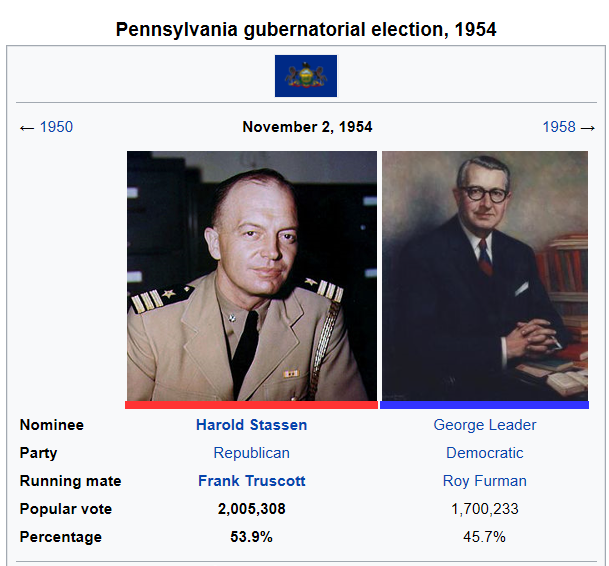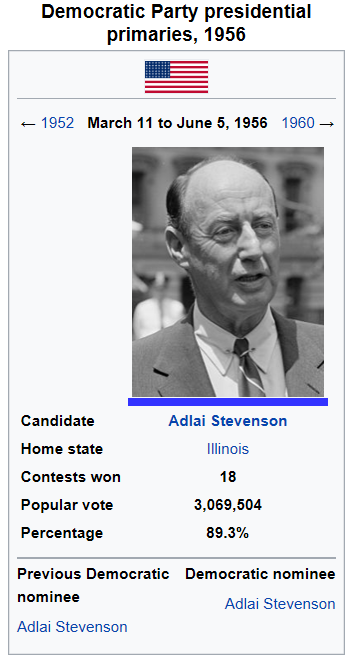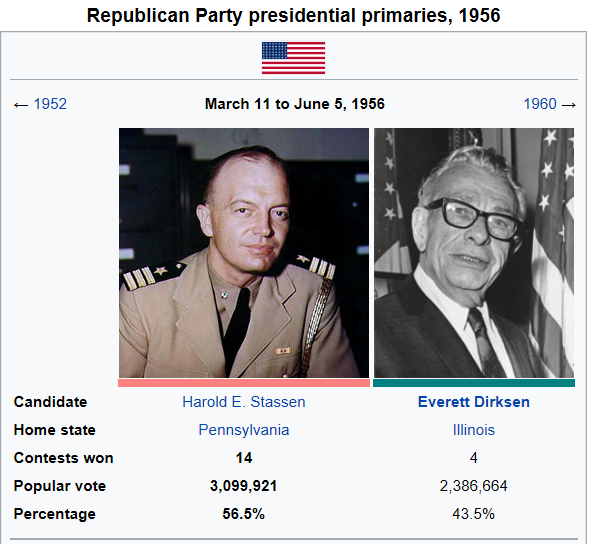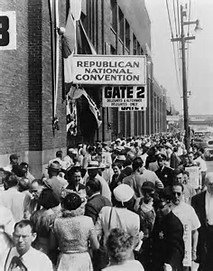You are using an out of date browser. It may not display this or other websites correctly.
You should upgrade or use an alternative browser.
You should upgrade or use an alternative browser.
Twists and Turns: An Alternate 1952 and Beyond
- Thread starter Gentleman Biaggi
- Start date
- Status
- Not open for further replies.
Threadmarks
View all 97 threadmarks
Reader mode
Reader mode
Recent threadmarks
Update 84: 1970 Nevada Gubernatorial Election Update 85: 1971 Spanish Presidential Election Update 86: More Divisions, Just this time in Capitalism Update 87: 1970 Chilean Election Update 88: The 1973 French Election Update 89: The 1970 Massachusetts Gubernatorial Election Update 90: The 1970 Midterm Elections (Part I) Update 91: KatangaGentleman Biaggi
Banned
I really like this. Good job.
I appreciate your support.Great job. Love this tl so far.
Yeah he looked a bit different back in the dayYoung Lyndon Johnson... so weird!
Gentleman Biaggi
Banned
Quick thing of note, because the next update is closely related to the last one, you guys get a two update day!
That is almost exactly how I imagined a young Lyndon Johnson to look. It's still bizarre seeing him young, but... there's a direct line traceable from Young LBJ to LBJ LBJ.
Update 6: The Attorney's Return
Gentleman Biaggi
Banned
The Attorney’s Return
“Due to some of your positions, many Conservative Republicans have become opposed to your campaign, what do you have to say to them?”
“I don’t have to say anything. My support for free speech and freedom speaks for itself.”
-Conversation between Harold Stassen and a reporter
Harold Stassen had managed solid presidential runs in 1944. 1948, and 1952 despite not holding a political office in any of them. By 1954 Stassen feared that his clout was falling by not holding a major office. In 1954 Stassen announced his run for governor of Pennsylvania. Due to Pennsylvania being a liberal Republican state and 1954 expecting to be a Republican year, Stassen expected to do fantastic. However, a better than expected campaign from George Leader caused some to doubt Stassen. In the end, Stassen defeated Leader, albeit by a closer than expected margin, and prepared for a return to political office.

“Due to some of your positions, many Conservative Republicans have become opposed to your campaign, what do you have to say to them?”
“I don’t have to say anything. My support for free speech and freedom speaks for itself.”
-Conversation between Harold Stassen and a reporter
Harold Stassen had managed solid presidential runs in 1944. 1948, and 1952 despite not holding a political office in any of them. By 1954 Stassen feared that his clout was falling by not holding a major office. In 1954 Stassen announced his run for governor of Pennsylvania. Due to Pennsylvania being a liberal Republican state and 1954 expecting to be a Republican year, Stassen expected to do fantastic. However, a better than expected campaign from George Leader caused some to doubt Stassen. In the end, Stassen defeated Leader, albeit by a closer than expected margin, and prepared for a return to political office.
Gentleman Biaggi
Banned
Yes. Dawson was not defeated in Congress, however, T.R.M Howard is considering a run against him.What is Driscoll up too? Is Bill Dawson still in Congress?
Update 7: Iranian Hostage Crisis
Gentleman Biaggi
Banned
Merry Christmas to all that celebrate it and to the ones that don't, happy holidays!
This update, while not the most christmas-y will shape this TL for ITTL decades.
Iranian Hostage Crisis
The Iranian Hostage Crisis of 1955 is one of the most infamous, and life-changing moments in world history.
After a second overthrow attempt Mossadegh became quite paranoid. After his opposition attempted to remove him, he became distrustful of the opposition, and attempted to crush it. He removed opposition from the military and crushed opposition in the parliament by releasing scandalous - and often fake information of opposition candidates. His disdain for democracy and crushing of opposition became unpopular with the public. These members formed the مردم انقلاب علیه مصدق, or the People’s Revolution Against Mossadegh. The group had some support from the United Kingdom, who still held Mossadegh in high disdain. Due to their severe opposition and support from the United Kingdom, many of their leaders and followers were jailed.
The opposition-Mossadegh conflict was interesting, and made for an interesting story. In 1955 American-based reporters went to investigate the story in Iran. After arriving in Tehran, the Mossadegh administration captured them. After news of this hit Stevenson, he immediately wanted to declare war. However, common sense wanted him to figure out if this was a mistake, after Mossadegh refused to work out a deal, Stevenson knew he had to declare war. It began a war that could change history forever...
This update, while not the most christmas-y will shape this TL for ITTL decades.
Iranian Hostage Crisis
The Iranian Hostage Crisis of 1955 is one of the most infamous, and life-changing moments in world history.
After a second overthrow attempt Mossadegh became quite paranoid. After his opposition attempted to remove him, he became distrustful of the opposition, and attempted to crush it. He removed opposition from the military and crushed opposition in the parliament by releasing scandalous - and often fake information of opposition candidates. His disdain for democracy and crushing of opposition became unpopular with the public. These members formed the مردم انقلاب علیه مصدق, or the People’s Revolution Against Mossadegh. The group had some support from the United Kingdom, who still held Mossadegh in high disdain. Due to their severe opposition and support from the United Kingdom, many of their leaders and followers were jailed.
The opposition-Mossadegh conflict was interesting, and made for an interesting story. In 1955 American-based reporters went to investigate the story in Iran. After arriving in Tehran, the Mossadegh administration captured them. After news of this hit Stevenson, he immediately wanted to declare war. However, common sense wanted him to figure out if this was a mistake, after Mossadegh refused to work out a deal, Stevenson knew he had to declare war. It began a war that could change history forever...
Gentleman Biaggi
Banned
OkAdlai is making me Madlai.
He does have an election coming up so someone else might have to
Update 8: 1956 nominations
Gentleman Biaggi
Banned
1956 Nominations
In 1956 Adlai Stevenson was not looking good for re-election. His war in Iran failed to incorporate the rally-around-the-flag effect that some had expected. The Southern wing of the party hated him for appointing Truman to the supreme court. Meanwhile, the northern Democrats hadn’t grown enough by 1956 to completely overpower them. Even with said unpopularity, Stevenson still faced little opposition in the primaries. Maybe a state senator or two would challenge him as a favorite son, but none were successful. In the end, Stevenson steamrolled through his opposition through the primaries.

However, there was still the issue of the convention. However, Stevenson used great speakers such as Hubert Humphrey and Lyndon Johnson to pull the convention to a Civil Rights platform. After the success of civil rights at the convention, many Southerners wanted to leave again, and they did. Delegations from South Carolina, Louisiana, Mississippi, Alabama, and Arkansas left the convention, and other delegates from Virginia, Texas, Georgia, Florida, and North Carolina left the convention hall to form their own party.
The difference between the 1948 Dixiecrats and the 1956 ones is clear. The 1948 ones had a clear list of willing candidates. Meanwhile, the 1956 brand had a list, it’s just that no one wanted to be on it. Prominent leaders like Richard Russell Jr., Strom Thurmond, Orval Fabus, Fielding Wright, Harry F. Byrd, and James Eastland all declined. Even more less known or less popular candidates like Robert Byrd, Happy Chandler, or Hugh White declined. This conundrum lead to several draft candidacies. Most notably, a draft campaign for Douglas MacArthur, who had attempted to keep the troops segregated did quite well. To some Dixiecrat leaders, MacArthur could be appealing to the whole nation, and possibly give them more success nationwide than in 1948. However, when MacArthur was only two votes away from getting the nomination, a Texas delegate phoned him to announce the news, and MacArthur was livid. He called the Dixiecrats “second-class split offs” and refused the nomination. After MacArthur’s decline, the delegates shifted around, until one candidate finally threw his hat in the race on the thirteenth ballot.
Benjamin Travis Laney was the former governor of Arkansas and was largely considered to become the Dixiecratic nominee in 1948, but he declined. By 1956 he had been out of office for seven years and needed some recognition. So, he threw his hat in to be nominated. With only draft efforts and small-time candidates in the running, Lanley was nominated on the sixteenth ballot. After this, he needed a running mate. Once again, most candidates rejected the position, so Lanley selected Leander Perez, a kingmaker from Louisiana, in hopes that he would put the machines towards the ticket. Some Dixecrat leaders were unsure of this, and it would carry on to November sixth.


The Dixiecratic candidates
The Republican Party looked ready for a comeback after the Stevenson administration became unpopular in the south and twenty years of party fatigue gave any Republican a clear shot at the presidency. Out of these conditions two candidates arose. Senate Minority Leader Everett Dirksen and governor Harold Stassen. Harold Stassen is often credited with running the first “modern campaign” he didn’t rely on favorite sons, and instead got endorsements from prominent politicians from states he was competing in. This strategy worked in the primaries, and Dirksen’s campaign only managed to win four states.

Even though Stassen’s primary performance was fantastic, it reminded many of Estes Kefauver’s performance in 1952, and he still managed to lose at the convention. Dirksen managed to rally Conservative Republicans and establishment figures in the convention, while Stassen tried to ride completely off his primary performance, causing his convention loss. Stassen lost with dignity, but vowed to return to the national stage with a vengeance.

Photo of the entrance to the controversial 1956 Republican Convention
In 1956 Adlai Stevenson was not looking good for re-election. His war in Iran failed to incorporate the rally-around-the-flag effect that some had expected. The Southern wing of the party hated him for appointing Truman to the supreme court. Meanwhile, the northern Democrats hadn’t grown enough by 1956 to completely overpower them. Even with said unpopularity, Stevenson still faced little opposition in the primaries. Maybe a state senator or two would challenge him as a favorite son, but none were successful. In the end, Stevenson steamrolled through his opposition through the primaries.
However, there was still the issue of the convention. However, Stevenson used great speakers such as Hubert Humphrey and Lyndon Johnson to pull the convention to a Civil Rights platform. After the success of civil rights at the convention, many Southerners wanted to leave again, and they did. Delegations from South Carolina, Louisiana, Mississippi, Alabama, and Arkansas left the convention, and other delegates from Virginia, Texas, Georgia, Florida, and North Carolina left the convention hall to form their own party.
The difference between the 1948 Dixiecrats and the 1956 ones is clear. The 1948 ones had a clear list of willing candidates. Meanwhile, the 1956 brand had a list, it’s just that no one wanted to be on it. Prominent leaders like Richard Russell Jr., Strom Thurmond, Orval Fabus, Fielding Wright, Harry F. Byrd, and James Eastland all declined. Even more less known or less popular candidates like Robert Byrd, Happy Chandler, or Hugh White declined. This conundrum lead to several draft candidacies. Most notably, a draft campaign for Douglas MacArthur, who had attempted to keep the troops segregated did quite well. To some Dixiecrat leaders, MacArthur could be appealing to the whole nation, and possibly give them more success nationwide than in 1948. However, when MacArthur was only two votes away from getting the nomination, a Texas delegate phoned him to announce the news, and MacArthur was livid. He called the Dixiecrats “second-class split offs” and refused the nomination. After MacArthur’s decline, the delegates shifted around, until one candidate finally threw his hat in the race on the thirteenth ballot.
Benjamin Travis Laney was the former governor of Arkansas and was largely considered to become the Dixiecratic nominee in 1948, but he declined. By 1956 he had been out of office for seven years and needed some recognition. So, he threw his hat in to be nominated. With only draft efforts and small-time candidates in the running, Lanley was nominated on the sixteenth ballot. After this, he needed a running mate. Once again, most candidates rejected the position, so Lanley selected Leander Perez, a kingmaker from Louisiana, in hopes that he would put the machines towards the ticket. Some Dixecrat leaders were unsure of this, and it would carry on to November sixth.
The Dixiecratic candidates
The Republican Party looked ready for a comeback after the Stevenson administration became unpopular in the south and twenty years of party fatigue gave any Republican a clear shot at the presidency. Out of these conditions two candidates arose. Senate Minority Leader Everett Dirksen and governor Harold Stassen. Harold Stassen is often credited with running the first “modern campaign” he didn’t rely on favorite sons, and instead got endorsements from prominent politicians from states he was competing in. This strategy worked in the primaries, and Dirksen’s campaign only managed to win four states.
Even though Stassen’s primary performance was fantastic, it reminded many of Estes Kefauver’s performance in 1952, and he still managed to lose at the convention. Dirksen managed to rally Conservative Republicans and establishment figures in the convention, while Stassen tried to ride completely off his primary performance, causing his convention loss. Stassen lost with dignity, but vowed to return to the national stage with a vengeance.
Photo of the entrance to the controversial 1956 Republican Convention
Threadmarks
View all 97 threadmarks
Reader mode
Reader mode
Recent threadmarks
Update 84: 1970 Nevada Gubernatorial Election Update 85: 1971 Spanish Presidential Election Update 86: More Divisions, Just this time in Capitalism Update 87: 1970 Chilean Election Update 88: The 1973 French Election Update 89: The 1970 Massachusetts Gubernatorial Election Update 90: The 1970 Midterm Elections (Part I) Update 91: Katanga- Status
- Not open for further replies.
Share:

